Idea by
Alice Jia Li Song
Call for ideas 2021
Center for Art and Research in Energy
Center for Art and Research in Energy
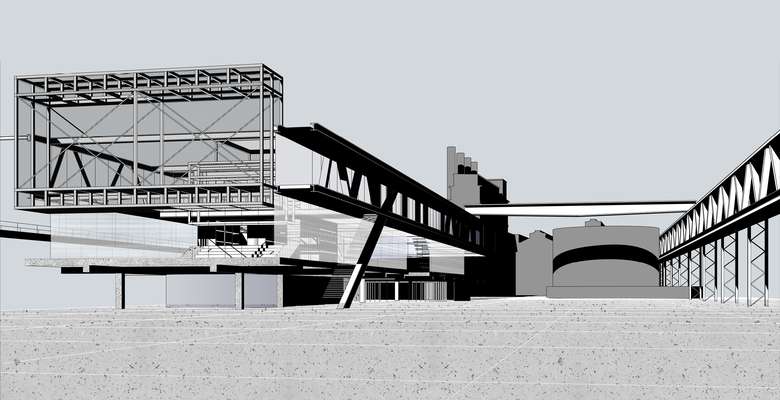
- Site-specific cases
Museums have the power to orient the public, they make visible what has been seen but not looked at. Yet behind the pristine white walls of these museums is also the power to conceal, they cloak the internal machinery of the museum which runs on exchanges of capital and legitimacy while its hermetic seal works to protect and disconnect its artifacts from their provenance and external environment. How can architecture draw attention to these hidden mechanisms if not reveal them?
C.A.R.E. is a new cultural institution in the heart of Lisbon. It repositions three key organizations: the EDP Foundation, a non-profit subsidiary of the national Portuguese electric company; Central Tejo, a former power station converted into a present-day heritage museum; and MAAT, the newest contemporary art museum of Lisbon. By revealing and realigning their relationship, art and science can be positioned closely together to tackle the energy crisis which is both profoundly social and cultural.
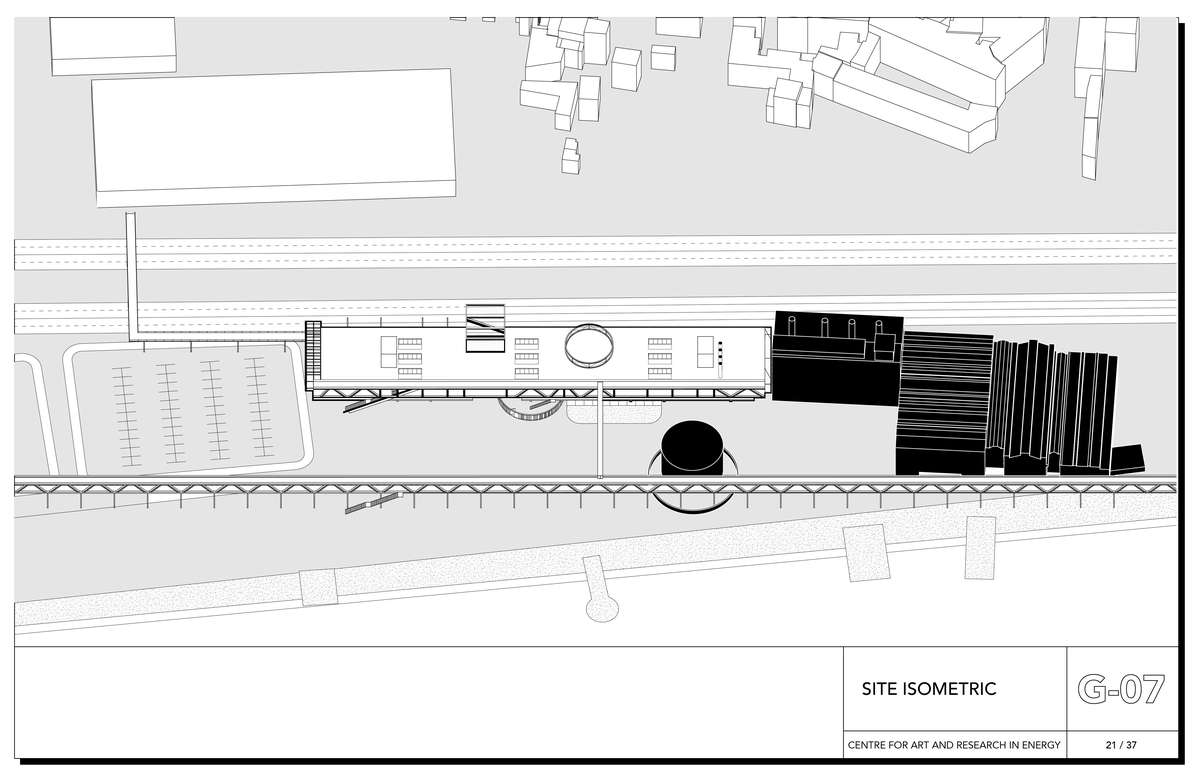
C.A.R.E. sits on the Tagus River, the proposal connects to the existing Central Tejo buildings in black, it also threads itself into the urban fabric a skywalk that runs along the river and connects to many other major landmarks of Lisbon.
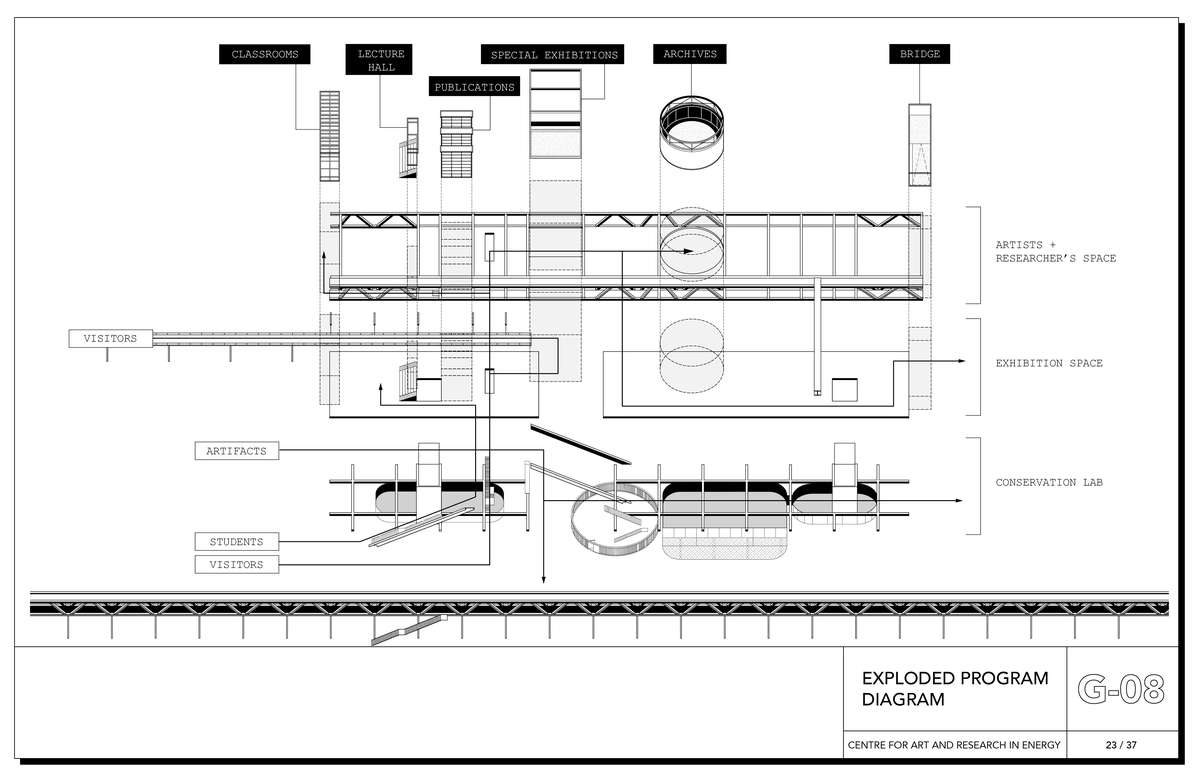
The institution believes that in addition to typical public-facing programs such as exhibition and education space, giving access to programs that reveal the processes of work that happen at the institution will give legibility to the mechanisms of the institution. This will provide visitors with the insight necessary to promote a criticality to examine the world around them.

One facet of the institution’s new role is the maintenance and conservation of industrial artifacts that is part of the EDP Foundation’s ongoing archival efforts. The product of this work is currently only displayed in the Electricity Museum but the labor of this work will be open to the public on the ground level of C.A.R.E.
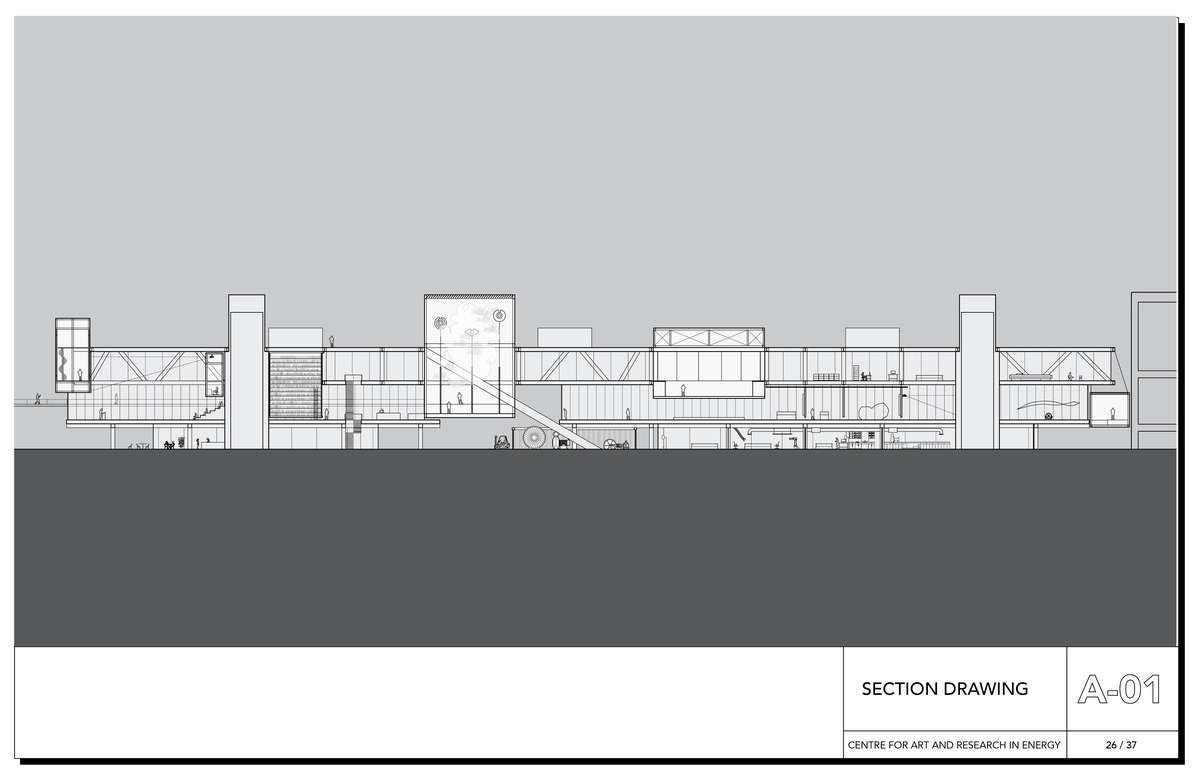
The building is conceived as an occupiable hanger system that holds occupiable volumes including artists and researcher spaces, supporting work from researchers and artists by providing access to EDP’s archival resources in the development of their work.
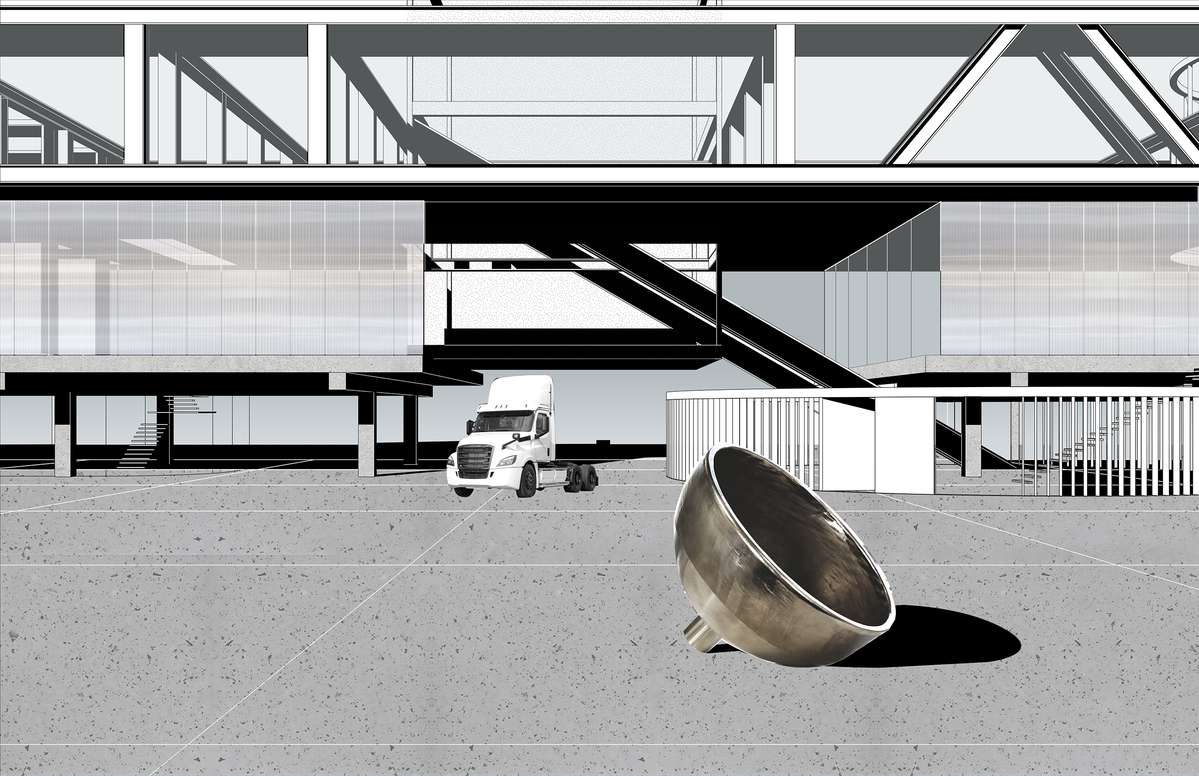
The new building serves as the new entry point to Central Tejo to expand beyond the static and didactic nature of the heritage museum.
Center for Art and Research in Energy
Center for Art and Research in Energy

- Site-specific cases
Museums have the power to orient the public, they make visible what has been seen but not looked at. Yet behind the pristine white walls of these museums is also the power to conceal, they cloak the internal machinery of the museum which runs on exchanges of capital and legitimacy while its hermetic seal works to protect and disconnect its artifacts from their provenance and external environment. How can architecture draw attention to these hidden mechanisms if not reveal them?
C.A.R.E. is a new cultural institution in the heart of Lisbon. It repositions three key organizations: the EDP Foundation, a non-profit subsidiary of the national Portuguese electric company; Central Tejo, a former power station converted into a present-day heritage museum; and MAAT, the newest contemporary art museum of Lisbon. By revealing and realigning their relationship, art and science can be positioned closely together to tackle the energy crisis which is both profoundly social and cultural.
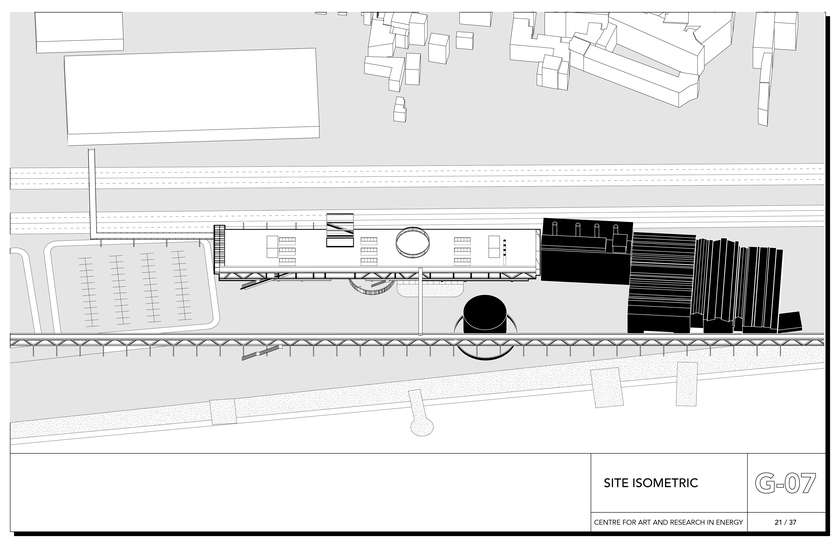
C.A.R.E. sits on the Tagus River, the proposal connects to the existing Central Tejo buildings in black, it also threads itself into the urban fabric a skywalk that runs along the river and connects to many other major landmarks of Lisbon.
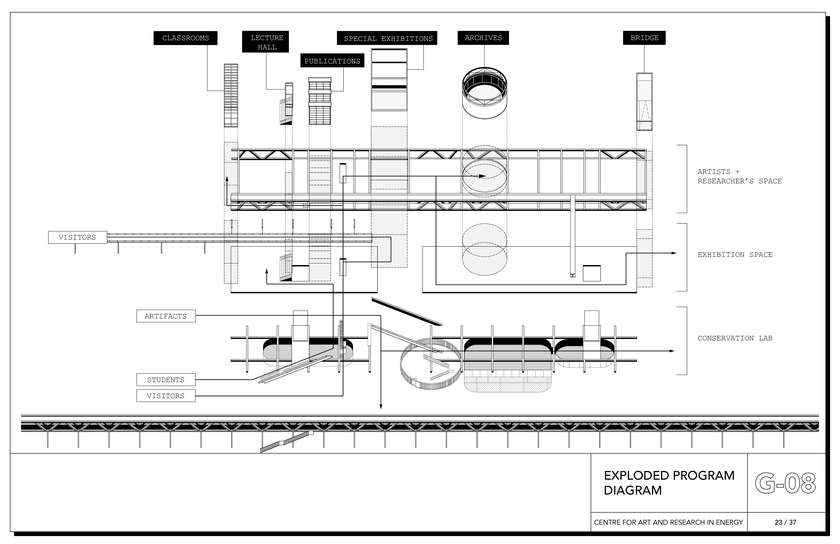
The institution believes that in addition to typical public-facing programs such as exhibition and education space, giving access to programs that reveal the processes of work that happen at the institution will give legibility to the mechanisms of the institution. This will provide visitors with the insight necessary to promote a criticality to examine the world around them.
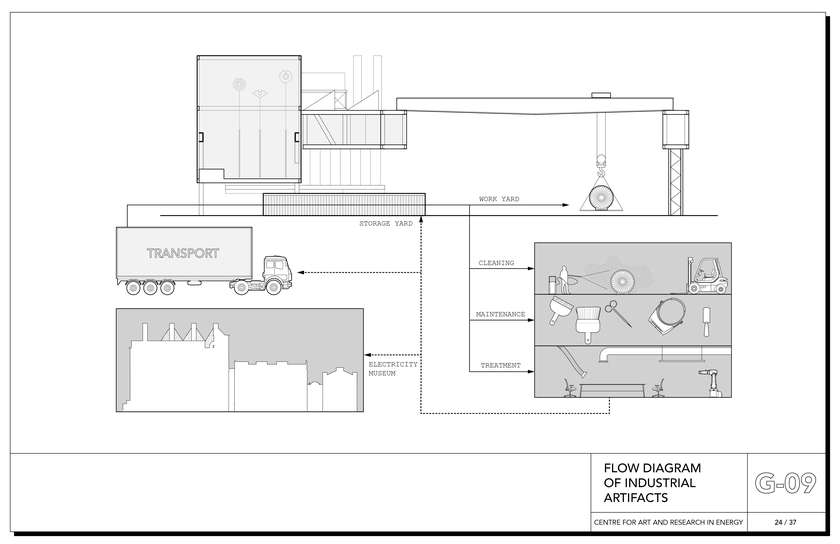
One facet of the institution’s new role is the maintenance and conservation of industrial artifacts that is part of the EDP Foundation’s ongoing archival efforts. The product of this work is currently only displayed in the Electricity Museum but the labor of this work will be open to the public on the ground level of C.A.R.E.
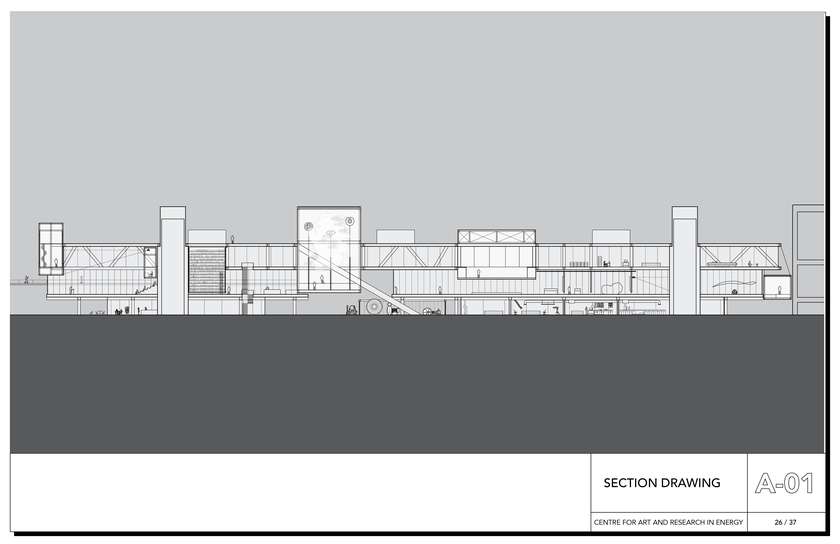
The building is conceived as an occupiable hanger system that holds occupiable volumes including artists and researcher spaces, supporting work from researchers and artists by providing access to EDP’s archival resources in the development of their work.
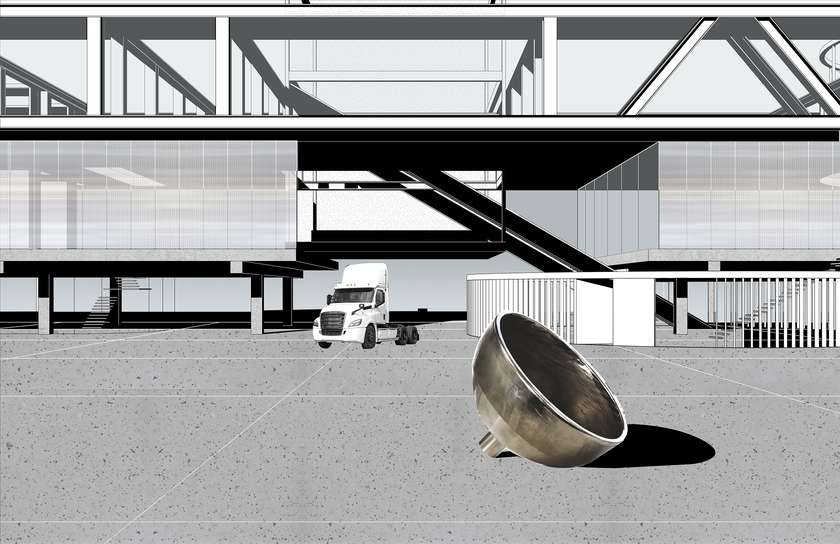
The new building serves as the new entry point to Central Tejo to expand beyond the static and didactic nature of the heritage museum.